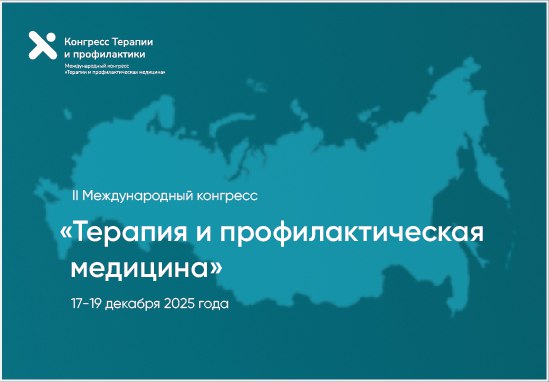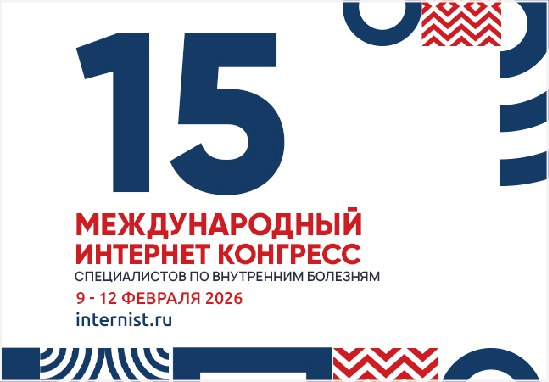Питание — один из важных факторов профилактики и лечения сердечно-сосудистых заболеваний, обусловленных атеросклерозом
https://doi.org/10.15829/1728-8800-2020-2301
Аннотация
В статье рассматриваются вопросы различных типов питания и его влияния на кардиоваскулярную патологию, потенциальные преимущества того или иного рациона питания для сердечно-сосудистой системы. Охарактеризованы проблемы в изучении влияния питания на кардиоваскулярную патологию. Отдельное внимание уделено растительной диете и ее влиянию на атеросклероз. Проведен анализ крупного исследования PURE (Prospective Urban and Rural Epidemiological Study), в котором изложен современный взгляд на диету, а также на развитие сердечно-сосудистой патологии.
Об авторах
И. В. РудченкоРоссия
Рудченко Игнат Валерьевич — кандидат медицинских наук, начальник испытательной лаборатории (биотехнических систем и технологий)
Анапа
В. В. Тыренко
Россия
Тыренко Вадим Витальевич — доктор медицинских наук, профессор, начальник кафедры и клиники факультетской терапии
Санкт-Петербург
В. А. Качнов
Россия
Качнов Василий Александрович — кандидат медицинских наук, преподаватель кафедры факультетской терапии
Санкт-Петербург
Список литературы
1. Eckel RH, Jakicic JM, Ard JD, et al. 2013 AHA/ACC guideline on lifestyle management to reduce cardiovascular risk: a report of the American College of Cardiology/American Heart Association Task Force on Practice Guidelines. JACC. 2014;63:25 Part B.:2960-84. doi:10.1016/j.jacc.2013.11.003.
2. Gidding SS, Lichtenstein AH, Faith MS, et al. Implementing American heart association pediatric and adult nutrition guidelines: a scientific statement from the American heart association nutrition committee of the council on nutrition, physical activity and metabolism, council on cardiovascular disease in the young, council on arteriosclerosis, thrombosis and vascular biology, council on cardiovascular nursing, council on epidemiology and prevention, and council for high blood pressure research. Circulation. 2009 Mar 3;119(8):1161-75. doi:10.1161/CIRCULATIONAHA.109.191856.
3. Maki KC, Slavin JL, Rains TM, et al. Limitations of observational evidence: implications for evidence-based dietary recommendations. Adv Nutr. 2014;5:1:7-15. doi:10.3945/an.113.004929.
4. Davies HT, Crombie IK. Bias in case-control studies. Hosp Med. 2000 Apr;61(4):279-81. doi:10.12968/hosp.2000.61.4.1875
5. Kearns CE, Schmidt LA, Glantz SA. Sugar industry and coronary heart disease research: a historical analysis of internal industry documents. JAMA Internal Medicine. 2016;176:11:1680-5. doi:10.1001/jamainternmed.2016.5394.
6. U.S. Department of Health and Human Services and U.S. Department of Agriculture. 2015-2020 Dietary Guidelines for Americans: 8th Edition. Washington, DC, 2015. https://health.gov/our-work/food-nutrition/2015-2020-dietary-guidelines. (22 February 2016).
7. Shikany JM, Safford MM, Newby PK, et al. Southern dietary pattern is associated with hazard of acute coronary heart disease in the Reasons for Geographic and Racial Differences in Stroke (REGARDS) Study. Circulation. 2015;132:804-14. doi:10.1161/CIRCULATIONAHA.114.014421.
8. Wang DD, Li Y, Chiuve SE, et al. Association of specific dietary fats with total and cause-specific mortality. JAMA Internal Medicine. 2016;176:8:1134-45. doi:10.1001/jamainternmed.2016.2417.
9. Dehghan M, Mente A, Teo KK, et al. Ongoing Telmisartan Alone and in Combination With Ramipril Global End Point Trial (ONTARGET)/Telmisartan Randomized Assessment Study in ACEI Intolerant Subjects With Cardiovascular Disease (TRANSCEND) Trial Investigators. Relationship between healthy diet and risk of cardiovascular disease among patients on drug therapies for secondary prevention: a prospective cohort study of 31546 highrisk individuals from 40 countries. Circulation. 2012;126:2705-12. doi:10.1161/CIRCULATIONAHA.112.103234.
10. Li S, Chiuve SE, Flint A, et al. Better diet quality and decreased mortality among myocardial infarction survivors. JAMA Internal Medicine. 2013;173:19:1808-19. doi:10.1001/jamainternmed.2013.9768.
11. Stewart RA, Wallentin L, Benatar J, et al. Dietary patterns and the risk of major adverse cardiovascular events in a global study of high-risk patients with stable coronary heart disease. Eur Heart J. 2016;37:25:1993-2001. doi:10.1093/eurheartj/ehw125.
12. United States Department of Agriculture, Agriculture Research Service. USDA Nutrient Database for Standard Reference, Release 14. 2001. Available at: https://data.nal.usda.gov/dataset/usda-national-nutrient-database-standard-reference-legacyrelease.
13. Craig WJ, Mangels AR, American Dietetic Association. Position of the American Dietetic Association: vegetarian diets. J Am Diet Assoc. 2009;109:1266-82. doi:10.1016/j.jada.2009.05.027.
14. Crowe FL, Appleby PN, Travis RC, et al. Risk of hospitalization or death from ischemic heart disease among British vegetarians and nonvegetarians: results from the EPIC-Oxford cohort study. Am J Clin Nutr. 2013;97:3:597-603. doi:10.3945/ajcn.112.044073.
15. Tonstad S, Butler T, Yan R, et al. Type of vegetarian diet, body weight and prevalence of type 2 diabetes. Diabetes Care. 2009;32:5:791-6. doi:10.2337/dc08-1886.
16. Rizzo NS, Sabaté J, Jaceldo-Siegl K, et al. Vegetarian dietary patterns are associated with a lower risk of metabolic syndrome: the Adventist Health Study 2. Diabetes Care. 2011;34:5:1225-7. doi:10.2337/dc10-1221.
17. Yokoyama Y, Nishimura K, Barnard ND, et al. Vegetarian diets and blood pressure: a meta-analysis. JAMA Internal Medicine. 2014;174:4:577-87. doi:10.1001/jamainternmed.2013.14547.
18. Barnard ND, Levin SM, Yokoyama Y. A systematic review and metaanalysis of changes in body weight in clinical trials of vegetarian diets. J Acad Nutr Diet. 2015;115:6:954-69. doi:10.1016/j.jand.2014.11.016.
19. Willcox B, Willcox D, Todoriki H, et al. Caloric restriction, the traditional Okinawan diet, and healthy aging. Ann NY Acad Sci. 2007;1114:1:434-55. doi:10.1196/annals.1396.037.
20. Sinnett PF, Whyte HM. Epidemiological studies in a total highland population, Tukisenta, New Guinea. Cardiovascular disease and relevant clinical, electrocardiographic, radiological and biochemical findings. J Clin Epidemiol. 1973;26:5:265-90. doi:10.1016/0021-9681(73)90031-3.
21. Campbell TC, Parpia B, Chen J. Diet, lifestyle, and the etiology of coronary artery disease: the Cornell China study. Am J Cardiol. 1998;82:10:18-21. doi:10.1016/S0002-9149(98)00718-8.
22. Miller K, Rubenstein A, Astrand PO. Lipid values in Kalahari bushmen. Arch Intern Med. 1968;121:5:414-7. doi:10.1001/archinte.1968.03640050024005.
23. Ornish DM, Scherwitz LW, Doody RS, et al. Effects of stress management training and dietary changes in treating ischemic heart disease. Am J Cardiol. 1982;49:4:1008. doi:10.1016/0002-9149(82)92441-9.
24. Gould KL, Ornish D, Scherwitz L, et al. Changes in myocardial perfusion abnormalities by positron emission tomography after long-term, intense risk factor modification. JAMA. 1995;274:11:894-901. doi: 10.1001/jama.274.11.894.
25. Ornish D, Brown SE, Scherwitz LW, et al. Can lifestyle changes reverse coronary artery disease?: The Lifestyle Heart Trial. Lancet. 1990;336:129-33. doi:10.1016/0140-6736(90)91656-U.
26. Ornish D, Scherwitz LW, Billings JH, et al. Intensive lifestyle changes for reversal of coronary artery disease. JAMA. 1998;280:23:2001- 07. doi:10.1001/jama.280.23.2001.
27. Ornish D. Avoiding revascularization with lifestyle changes: The Multicenter Lifestyle Demonstration Project. Am J Cardiol. 1999;82:72T-6T. doi:10.1016/S0002-9149(98)00744-9.
28. Silberman A, Banthia R, Estay IS, et al. The effectiveness and efficacy of an intensive cardiac rehabilitation program in 24 sites. Am J Health Promot. 2010;24(4):260-6. doi:10.4278/ajhp.24.4.arb.
29. Esselstyn CB Jr, Ellis SG, Medendorp SV, et al. A strategy to arrest and reverse coronary artery disease: a 5-year longitudinal study of a single physician’s practice. J Family Practice. 1995;41:6:560-9.
30. Esselstyn CB. Jr. Updating a 12-year experience with arrest and reversal therapy for coronary heart disease (an overdue requiem for palliative cardiology). Am J Cardiol. 1999;84:3:339- 41. doi:10.1016/S0002-9149(99)00290-8.
31. Esselstyn CB Jr, Gendy G, Doyle J, et al. A way to reverse CAD? J Family Practice. 2014;63:7:356-64.
32. Song M, Fung TT, Hu FB, et al. Association of animal and plant protein intake with all-cause and cause-specific mortality. JAMA Internal Medicine. 2016;176:10:1453-63. doi:10.1001/jamainternmed.2016.4182.
33. Dehghan M, Mente A, Zhang X, et al. Associations of fats and carbohydrate intake with cardiovascular disease and mortality in 18 countries from five continents (PURE): A prospective cohort study. Lancet. 2017;390:2050-62. doi:10.1016/S0140-6736(17)32252-3.
34. Nicholls M. The PURE study implications. Eur Heart J. 2018;39:48:4227-9. doi:10.1093/eurheartj/ehy762.
35. Poelman M, Strak M, Schmitz O, et al. Relations between the residential fast-food environment and the individual risk of cardiovascular diseases in The Netherlands: A nationwide follow-up study. Eur J Prevent Cardiol. 2018;25:13:1397-405. doi:10.1177/2047487318769458.
Рецензия
Для цитирования:
Рудченко И.В., Тыренко В.В., Качнов В.А. Питание — один из важных факторов профилактики и лечения сердечно-сосудистых заболеваний, обусловленных атеросклерозом. Кардиоваскулярная терапия и профилактика. 2020;19(3):2301. https://doi.org/10.15829/1728-8800-2020-2301
For citation:
Rudchenko I.V., Tyrenko V.V., Kachnov V.A. Nutrition as one of the important factors in prevention and treatment of atherosclerotic cardiovascular diseases. Cardiovascular Therapy and Prevention. 2020;19(3):2301. (In Russ.) https://doi.org/10.15829/1728-8800-2020-2301

























































